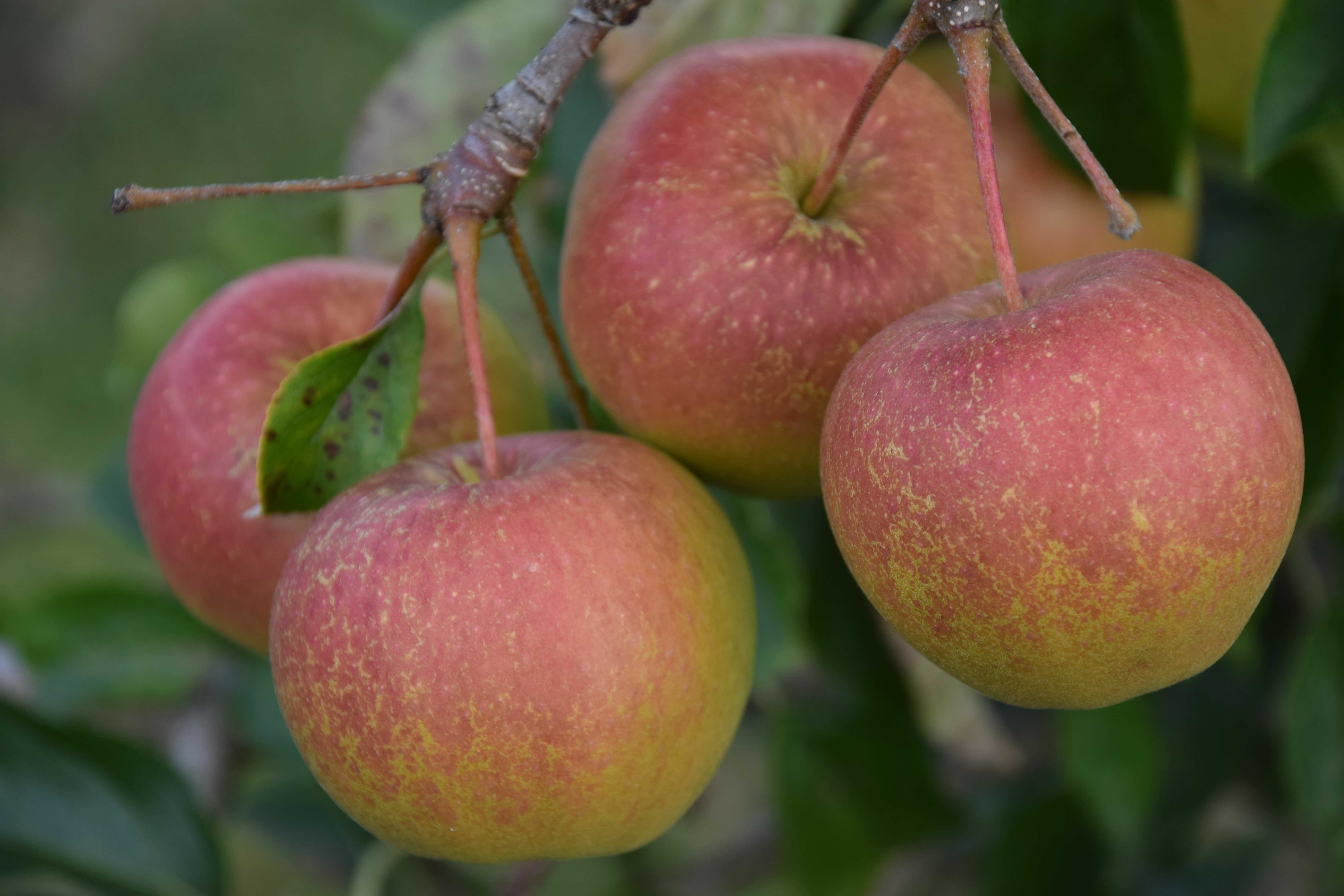
If you are lucky enough to have an apple tree in the garden you will know that apple season is with us. Of all the fruit we can grow in our gardens, apples are the easiest and best value.
It is true that they are an investment, costing a lot more than a packet of cabbage seed, but within a few years they have paid for themselves and a few years later the apples are all free! Home gardeners won’t be self sufficient all year, but if you can’t eat them all when they are fresh you can cook and freeze surplus, make chutney and so many more recipes.
It is not easy or possible to grow all the supermarket kinds, especially Pink Lady and ‘Braeburn’ which need a warmer climate than we can provide, although in this area we have a better than average chance of success.
But there are lots of tasty apples to try and by planting three or four apple trees you can have fresh apples from August to the end of the year. You can grow apples in pots but it is not easy so I would recommend planting in the soil, if possible. If your garden is small then you can train apples as cordons (single stems) or espaliers against a fence or wall. Just ask at Nags Hall for advice. If you must grow them in pots make sure you plant them in John Innes No 3 compost and NOT multipurpose compost.
Before we get to the tasty bit there are two issues we need to consider: rootstocks and pollination groups. These are not as complex as they may sound so bear with me.
Although every apple flower has the female (tiny apple) and male (pollen) parts, the pollen from one apple tree cannot fertilise the same flower. You need to plant more than one apple tree to get fruit. There are a few self-fertile apples but even these will crop better if they are ‘cross pollinated.
Time of flowering of apple trees varies so apples are put into pollination groups, based on whether they flower early or late. This does not relate to when the fruit are ready. Generally split into groups from one to four, choose apples from the same group or an adjacent group to be sure their flowering overlaps. Crab apples are also usually good pollinators because they bloom for long periods.
Apple trees are grafted onto rootstocks. These are apples that don’t have good fruit but they control the size of the tree. The most popular are M9 and M26 which produce small trees. Both help to produce trees that crop after two or three years and are suitable for all soils although M9 is the weakest and only suitable for good, fertile soils. Trees can be spaced 3m apart and will reach about 2m high. Better for most sites, M26 is slightly more vigorous and trees can be planted 3-4m apart and will be about 2.4m high when mature.
People have different ideas about what makes a good apple. I am still astounded that people buy ‘Golden Delicious’ though when grown at home it is far better than ‘shop’ fruits.
The most valuable are early apples, which can ripen as early as August. ‘Beauty of Bath’ and ‘Worcester’ are traditional favourites though I have a soft spot for ‘George Cave’ and planted one in my garden though it has turned out not to be that at all. There used to be a row of these at Nags Hall and I remember having lunch sitting on bales of peat chomping through these off the trees. It is a rather sharp apple but easy to grow and really refreshing. ‘Discovery’ is now the most popular early apple and also good to grow at home. However, I am totally smitten by ‘Scrumptious’.
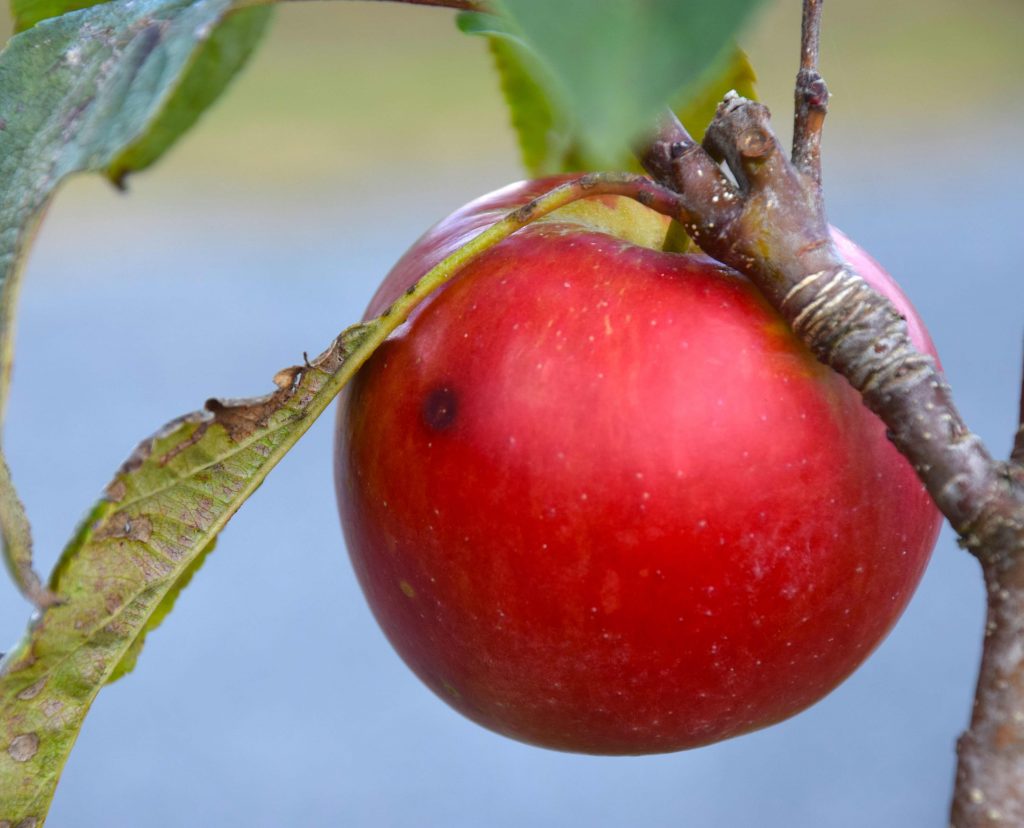
This is a relatively new apple and is slightly later. I have been picking for a month and now enjoying the last – early apples do not keep well. I would recommend this without reservation: it looks beautiful, is crisp and juicy and has a more complex flavour than most early apples. It does get a little scab (the brown spot on the skin) but I don’t spray my fruit and I don’t mind that.
Everyone loves ‘Cox’s Orange Pippin’ but it is not among the 20 apple trees I planted because it is prone to disease and not easy to grow. There are lots of apples with similar, great flavour. One of the best is ‘Kidd’s Orange Red’ which is bred from ‘Cox’. It is an easy apple to grow and gives you all the flavour you expect.
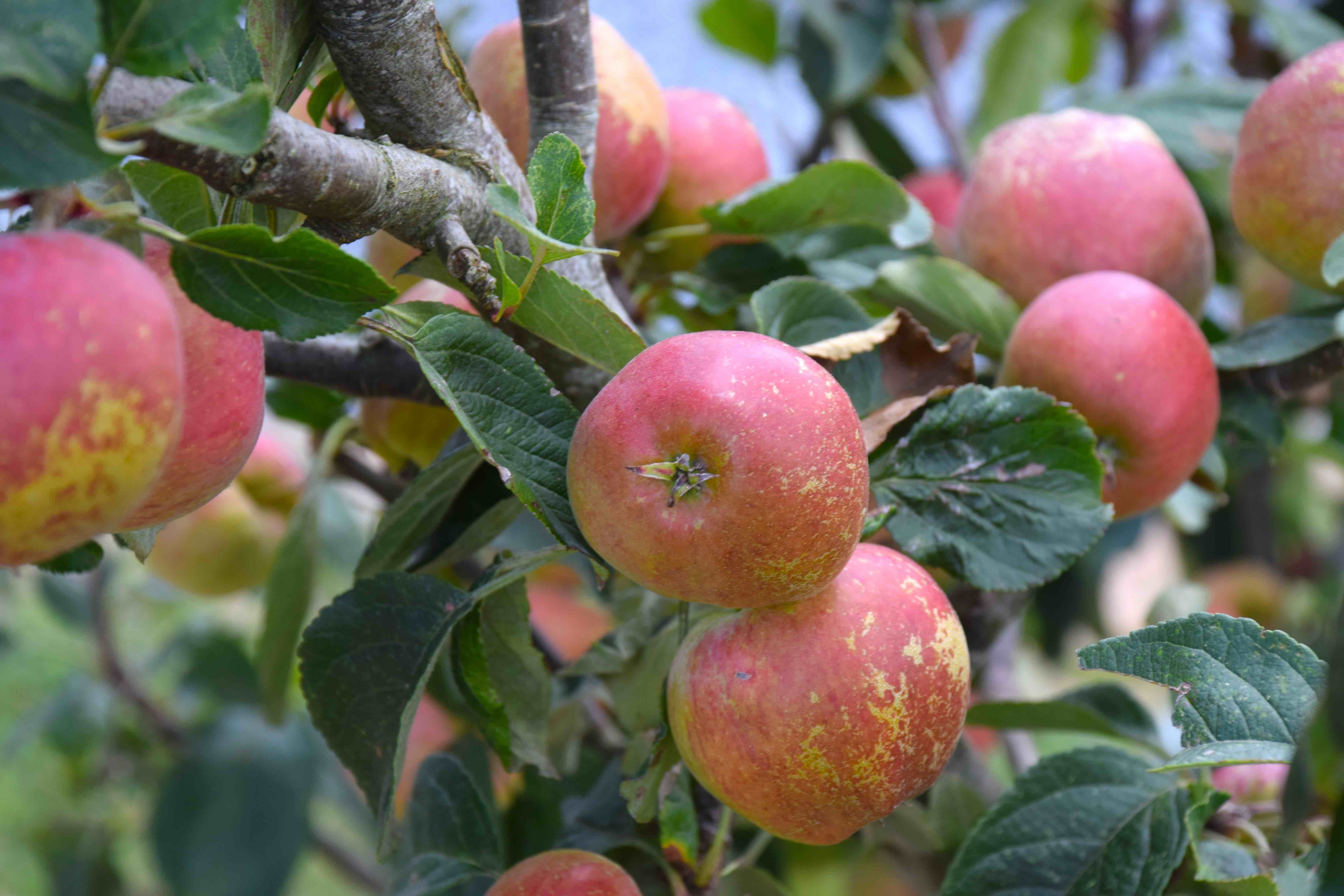
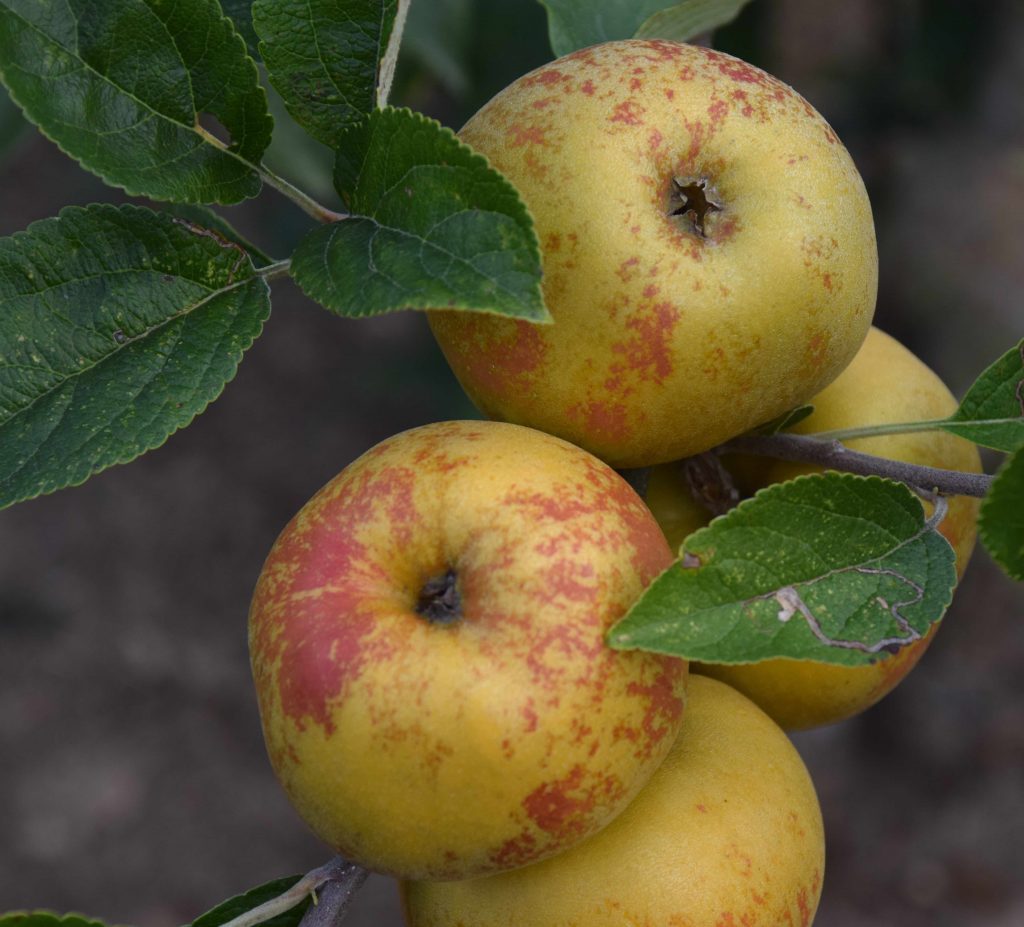
A pleasant surprise was when I ordered ‘Norfolk Royal’ but got ‘Norfolk Royal Russet’ instead. ‘Norfolk Royal’ is a good, old-fashioned apple that is sweet and juicy and good for cooking too but the russet form has all that nuttiness that you expect and a wonderful depth of flavour and I am very pleased I have this. All the photos are of this year’s crop and this has done very well although all the fruit are a bit smaller than usual because of the dry summer.
Another worth trying if you like sweet, crunchy, juicy apples is ‘Spartan’. It is quite late and when fully ripe it has a white ‘bloom’ on the skin. The apples are deep red and the flesh is white with a delicious ‘grapiness’.
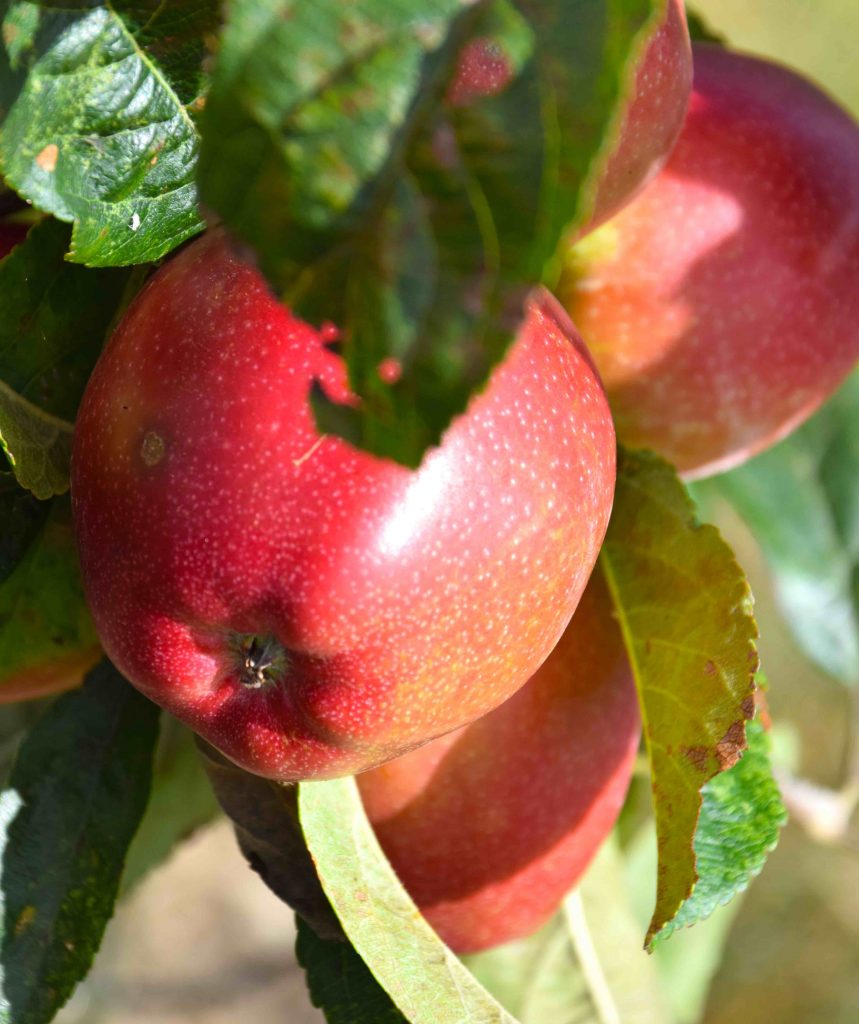
Whatever you choose, plant your apples in a sunny spot. Apples tolerate heavy soils well as long as they are not waterlogged in winter and neutral and slightly alkaline soils are perfect. Prepare you site now ready to plant in autumn and get ready for your own delicious apples in a few years and for decades to come.
Weekly reminders
Sow hardy annuals such as larkspur, nigella and calendula in empty spots in the border
Plant pots for autumn colour. Mini-cyclamen are ideal for instant colour and scent and flowering chrysanthemums pack a punch with colour for months
Lift and dry gladioli
Plant overwintering onions and garlic